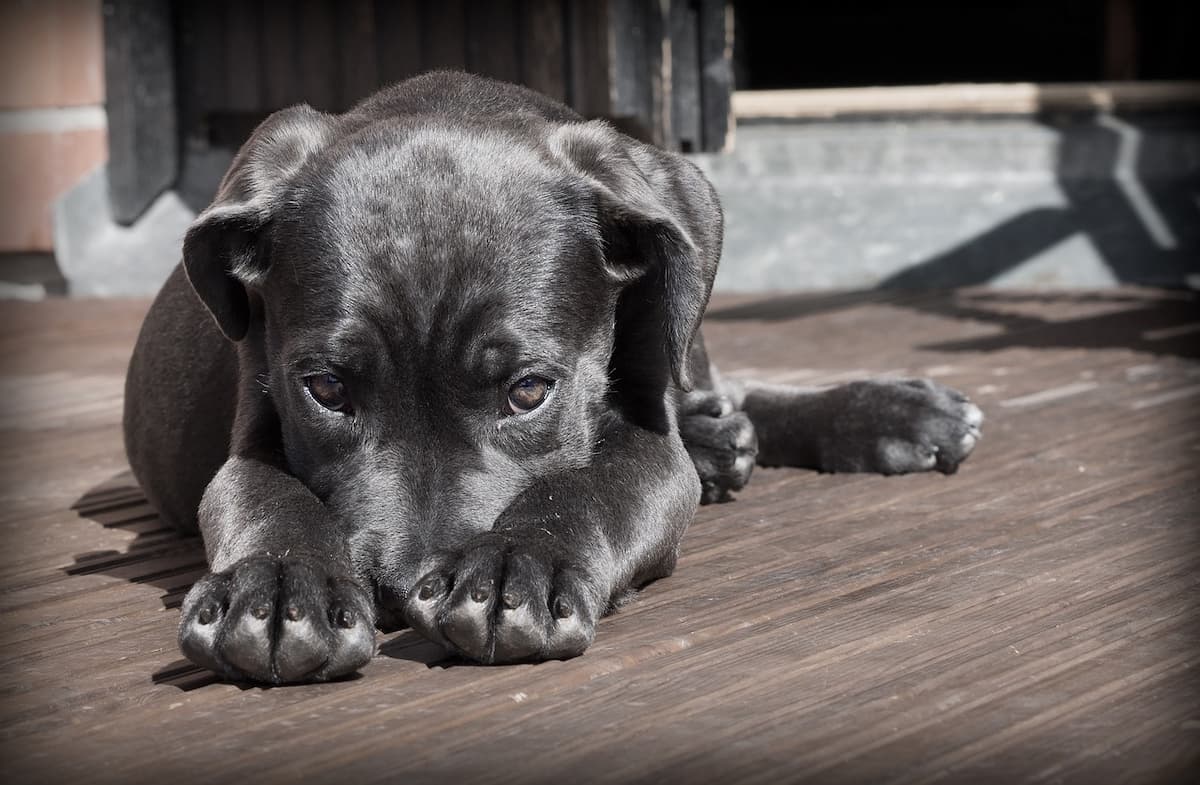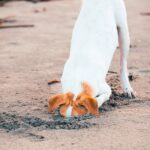Have you ever witnessed that adorable moment when one dog playfully nibbles on another dog’s ears?
It’s a sight that never fails to make us smile and wonder about the peculiar behavior.
Just like humans have their quirks, dogs have their own unique ways of showing affection and playing.
The ear-nibbling phenomenon raises a lot of questions—Is it a form of communication?
Or is it just a playful gesture?
This article will uncover the reasons behind this adorable behavior.
Exploring the Ear-Nibbling Habit
Dogs have this fascinating habit of nibbling on each other’s ears, and if you’ve ever wondered why they do it, you’re not alone.
It turns out that this seemingly peculiar behavior actually plays a significant role in canine communication.
Here are some reasons behind our dogs’ ear-nibbling habits:
Social Bonding
Dogs are social animals, and their interactions with fellow canines are crucial for establishing and maintaining social bonds.
Ear-nibbling is an integral part of doggy socialization, helping them develop trust and strengthen relationships with their pack members.
By nibbling on each other’s ears, dogs engage in a form of gentle play that promotes bonding and reinforces their social hierarchy.
It’s their way of building a sense of trust, camaraderie, and unity within the pack.
Canine Language
Dogs communicate through a complex system of body language, vocalizations, and, yes, even nibbling.
Ear nibbles can convey a variety of messages, such as playfulness, invitation to play, or simply saying, “Hey, you’re part of my pack!”
By engaging in this behavior, dogs are essentially expressing their desire to connect and interact with each other.
It’s their way of saying, “I’m friendly and want to engage with you!”
Affectionate Communication
Many dog enthusiasts believe that ear-nibbling is a form of affectionate communication between our furry friends.
Just like humans may engage in playful tickling or a gentle hair ruffle to show care, dogs demonstrate their affection by nibbling on each other’s ears.
It’s their way of saying, “I love you” or simply expressing their fondness for one another.
The act of ear-nibbling can also be seen as a canine equivalent of a warm hug.
Territorial Significance
While ear-nibbling is predominantly a friendly and affectionate behavior, it can also carry a territorial undertone.
In some cases, dogs may nibble on the ears of unfamiliar dogs as a way of asserting dominance or defending their territory.
By asserting their presence in this manner, dogs send a clear message to others that they are in charge and should be respected.
However, it’s important to note that not all ear-nibbling is a sign of dominance; it’s crucial to consider the context and observe other body language cues before drawing conclusions.
Grooming Behavior
A prevailing theory suggests that ear-nibbling is a form of grooming behavior.
Dogs naturally groom each other as a way to maintain cleanliness and promote social bonds.
Through nibbling on each other’s ears, dogs may be removing dirt or debris, as well as reinforcing their social connection.
It’s worth mentioning that dogs have a heightened sensitivity in their ears, and the stimulation from nibbling may also be pleasurable for them.
It’s Fun and Soothing
Believe it or not, nibbling on ears can be an enjoyable and comforting activity for dogs.
Just as we humans have our own seemingly odd habits that bring us joy, dogs find pleasure in lightly nibbling on each other’s ears.
It can provide a source of sensory stimulation and even help relieve stress or anxiety.
Think of it as a way for dogs to unwind and find comfort in the companionship of their fellow canines.
Is It Normal? When Ear-Nibbling Becomes Excessive
While ear-nibbling is perfectly natural for dogs and can be seen as cute and affectionate, it’s important to recognize when it becomes excessive.
Excessive ear-nibbling can indicate various scenarios that may need attention or intervention.
Let’s delve into some of the common scenarios where ear-nibbling becomes excessive in dogs.
1. Stress or Anxiety
One reason for excessive ear-nibbling can be due to stress or anxiety.
Dogs may resort to nibbling on their own or another dog’s ears as a way to self-soothe or as a displacement behavior.
If you notice your furry friend nibbling excessively on another dog’s ears, it might be a sign that they are feeling uneasy or stressed in their environment.
2. Medical Issues
Another possible scenario behind excessive ear-nibbling is an underlying medical issue.
Certain conditions, such as ear infections or allergies, can cause discomfort or irritation in a dog’s ears, leading them to nibble excessively.
If you observe redness, swelling, discharge, or any signs of discomfort in your dog’s ears, it’s essential to consult with a veterinarian to rule out any medical issues.
3. Dominance or Possessiveness
In some cases, excessive ear-nibbling in dogs can be attributed to dominant or possessive behavior.
Dogs may nibble on another dog’s ears to assert their dominance or claim ownership.
This behavior can potentially lead to conflicts between dogs, so it’s crucial to monitor their interactions and intervene if necessary.
Tips for Managing and Redirecting Ear-Nibbling Behavior in Dogs
If you notice that one dog is consistently nibbling on another’s ears to the point of discomfort, it’s crucial to manage and redirect this behavior.
Here are some tips to foster a harmonious environment:
1. Supervise and intervene: Keep an eye on your dogs when they interact, especially if ear-nibbling becomes excessive or leads to discomfort.
If you see one dog nibbling too roughly or the other dog is clearly distressed, gently intervene and redirect their attention to a more appropriate play activity.
2. Teach them a “leave it” command: Training your dogs to respond to a “leave it” command can be incredibly helpful in redirecting their focus away from ear-nibbling.
Reward them with treats and praise when they successfully comply with the command, reinforcing positive behavior.
3. Offer alternative chew toys or activities: Since ear-nibbling can be a form of exploration or teething discomfort, providing your dogs with appropriate chew toys, interactive puzzles, or bones can serve as a healthy outlet for their need to nibble.
By redirecting their attention and satisfying their chewing instincts, you can discourage excessive ear-nibbling between your furry friends.
Remember, it’s essential to observe the body language and reactions of both dogs involved in ear-nibbling behavior.
If one dog shows signs of distress or discomfort, it’s crucial to intervene and redirect their behavior appropriately.
With patience, supervision, and positive reinforcement, you can create a harmonious environment where your dogs can interact and play without causing unnecessary distress.
FAQ
Q: Why do dogs nibble on each other’s ears?
A: Well, when dogs nibble each other’s ears, it’s often a playful gesture.
It’s their way of showing affection and establishing a bond with other dogs.
Q: Is it just a form of play, or does it serve a different purpose?
A: While it is mostly a playful act, ear nibbling can also serve as a way of communicating among dogs.
It can be a gentle way for them to display dominance or submission, similar to how humans may engage in friendly hugs or handshakes.
Q: Are there any specific reasons why some dogs enjoy nibbling on ears more than others?
A: Every dog has its own unique personality, just like humans do!
Some dogs may simply find ears more enticing to nibble on than others.
It can also depend on the individual dog’s upbringing, breed characteristics, and previous experiences.
Q: Are there any potential risks or concerns associated with this behavior?
A: Generally, ear nibbling is considered harmless, especially when it occurs between dogs who have established a positive relationship.
However, it’s always important to monitor any interactions to ensure they remain safe and don’t escalate into aggressive behavior.
Q: Should I be worried if my dog starts nibbling on another dog’s ears too forcefully?
A: It’s best to keep an eye on their play sessions.
If the nibbling becomes too rough or one dog seems bothered, it may be a good idea to intervene and redirect their attention to a different activity.
Ensuring that all dogs involved are comfortable and enjoying the interaction is essential.
Q: Can ear nibbling be a sign of something more than just playfulness?
A: Occasionally, excessive ear nibbling can be a sign of underlying issues such as allergies, ear infections, or skin irritations.
If you notice redness, swelling, or signs of discomfort in either dog, it’s important to consult a veterinarian to rule out any health concerns.
Q: Can I prevent my dog from ear nibbling altogether?
A: While it may be difficult to completely stop the behavior, you can redirect your dog’s attention to alternative play activities such as tossing a ball or offering a chew toy.
Providing enough mental and physical stimulation for your dog can help reduce excessive ear nibbling.
Q: Is there any way to discourage other dogs from nibbling on my dog’s ears if it bothers them?
A: If your dog seems uncomfortable or doesn’t enjoy ear nibbling, you can try gently separating them from other dogs when this behavior occurs.
It might also be helpful to communicate and educate the other dog owners about your dog’s preferences, so they can take that into consideration during playtime.
Q: Can I join in on the fun and nibble on my dog’s ears myself?
A: While dogs may seem to enjoy ear nibbling, it’s essential to remember that they communicate differently from humans.
It’s generally best to avoid imitating this behavior and instead find other ways to bond and show affection to your furry friend that they’ll appreciate, such as petting or engaging in interactive games.
Closing the Chapter
While it may seem a bit odd to us humans, ear-nibbling actually quite normal in the canine world.
It’s their version of a friendly handshake or a pat on the back.
It’s their way of establishing trust, showing affection, and even strengthening their social bonds.
And let’s not forget how utterly adorable it looks when they indulge in this quirky behavior!
So, the next time you catch your dog nibbling on their furry pal’s ear, you’ll know that it’s all part of their charming doggie interactions.
And who can blame them?
Dogs have their own unique way of communicating, just like humans do.
It’s one of the many reasons we love them unconditionally.














